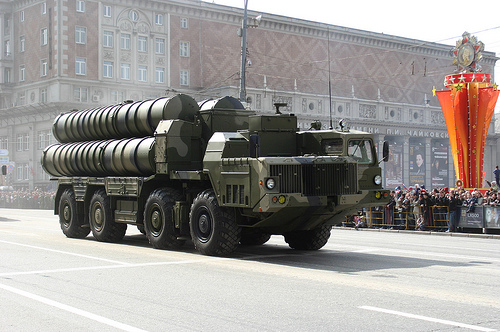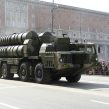
Moscow Intensifies Military-Scientific Research in Modernization Drive
Publication: Eurasia Daily Monitor Volume: 8 Issue: 51
By:

The Russian State Defense Order (Gosudarstvennyi Oboronnyi Zakaz –GOZ) for 2011, in areas related to research and development (R&D), was formulated under the control of the defense ministry’s Scientific-Technical Council (Nauchno-Tekhnicheskiy Sovet –NTS). The NTS is a new body which ensures collective discussions at the highest levels, particularly on developing arms and military special equipment and their use in armed conflicts; or, R&D on high-technology systems (Interfax-AVN, March 4).
The NTS is chaired by the defense minister, the chief of the General Staff serves as its deputy and the deputy chief of the General Staff is its executive-secretary. An expert group has been established under the NTS, chaired by the deputy chief of the General Staff, the chief of the armaments department, chief of the General Staff Main Operations Directorate, and the head the Department for Price Formation for Military Products (Departament Tsenoobrazovaniya Produktsii Voyennogo Naznacheniya). The NTS receives and reviews proposals on R&D and then includes its results in the GOZ. According to Major-General Igor Sheremet, the Executive-Secretary of the NTS and Deputy Chief of the General Staff, this is closely modeled on the US system. Sheremet explained that it is “very close to the one functioning in the United States,” adding “We arrived at it not for the sake of copying, but because the defense minister and chief of the General Staff had their own scientific research appear in this stage, a ‘channel’ (stvol) which allows them to receive scientifically substantiated recommendations and proposals” (Interfax-AVN, March 4). He appeared to describe a way of stove-piping key plans and ensuring they are examined and quickly presented to the Defense Minister, Anatoliy Serdyukov, and the Chief of the General Staff, Army-General Nikolai Makarov.
As the defense ministry ruthlessly reformed the military-education system, numerous military-scientific organizations and institutes have merged under the General Staff. Based upon 19 military science committees of the combat arms and branches of service and 38 scientific research organizations, five major scientific research institutes were formed and now function under the NTS. Consequently, the NTS in turn functions as “one desk” for all the military administration bodies. This considerably shortens the timescale for taking a sound proposal from its drafting stage to implementation. Sheremet believes the reformed system is more efficient and provided some supporting evidence: in six months the system has fulfilled over 1,500 short-term requests, the GOZ is subject to scrutiny by experts within the NTS and on R&D out of 550 proposals 146 were adopted for procurement plans in 2011. The 550 proposals were budgeted at 120 billion rubles ($4.18 billion), and the 146 selected for the GOZ was around 20 billion rubles ($697.44 million) (Krasnaya Zvezda, March 5).
General Sheremet highlighted the critical role played by the new body: “This is a new agency responsible for coordinating collective discussions at the highest level on the most important issues surrounding the development of weapons, military and special-purpose hardware, as well as its application during armed conflicts” (Interfax-AVN, March 4). Sheremet also told the defense ministry’s public council in early March that the NTS will provide military-scientific support in future for the development of inter-branch groupings, the joint strategic commands and will examine issues arising from forming a unified state defense order for the security agencies.
General Sheremet also told the same meeting that the NTS calculates the number of nuclear warheads needed for Russia to guarantee its retaliatory and launch-on-warning nuclear strike capability. “This scientific research work was carried out as part of the efforts to prepare proposals for the state armaments program with regard to the strategic nuclear forces,” Sheremet explained and noted this had included calculations on numbers of delivery vehicles and warheads (Interfax-AVN, March 4).
Rafael Timoshev, the Chairman of the Defense Ministry’s Public Council and President of the Nauka-XXI Security Research Assistance Foundation, suggested during the ongoing military reform that the General Staff is emerging as the body that integrates the most advanced ideas on national security from all the security agencies. If Timoshev’s view is accurate, this suggests a more proactive role is being played by the General Staff. Sheremet’s assessment of the importance of the NTS is that Russian military science now finds itself for the first time in a position to efficiently develop recommendations and proposals. The deputy chief of the General Staff also noted that the reform is driven by an analysis of Russia’s experience in local conflicts (Krasnaya Zvezda, March 5; Interfax-AVN, March 4).
Sheremet considers that the planned cuts in the numbers of Russian military-scientists has now effectively been abandoned, signaling yet another shift in the chameleon reform agenda. In his view, “staff of a required size” will be preserved in the military research centers. “A not quite reasonable step was made as military research institutes were being reorganized. Many argued that military institutes must be civilianized. Some proposed that military ranks be carried only by those with weapons in their hands. I did my best to make clear that these scientists are holding weapons of the future in their hands,” Sheremet said. The drive to civilianize military science had in some instances spiraled out of control, and corrective measures proved necessary. Sheremet explained that one command opted for this approach and consequently only 46 doctors of science out of 86 and 265 candidates of science out of 500 were saved. Civilianizing military-scientists was a blunder, since the moment his epaulets were removed, he could be “attacked by buyers” from the defense industry, offering a higher salary (Interfax-AVN, March 4).
The significance of Sheremet’s remarks should not be underestimated. It signals that “the fight back” in progress for some time during the reform has often emanated from within the General Staff, in this case correcting the one-size fits all effort to civilianize key structures. The new body does not offer a panacea, but it represents an effort to streamline a higgledy-piggledy approach that has all too often undermined Russian procurement planning. Equally, it confirms the persistence of a planning oddity that often puzzles westerners: forming policy and then searching out the scientific research basis to support it. One instance of this was the seemingly “ponderous” manner in which the joint strategic commands were formed and now this experiment will be given its necessary injection of deeper scientific research, implying that many aspects of the reform are still being shaped.




